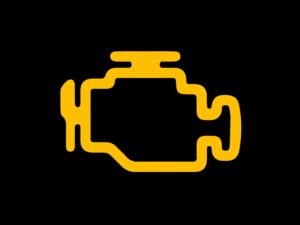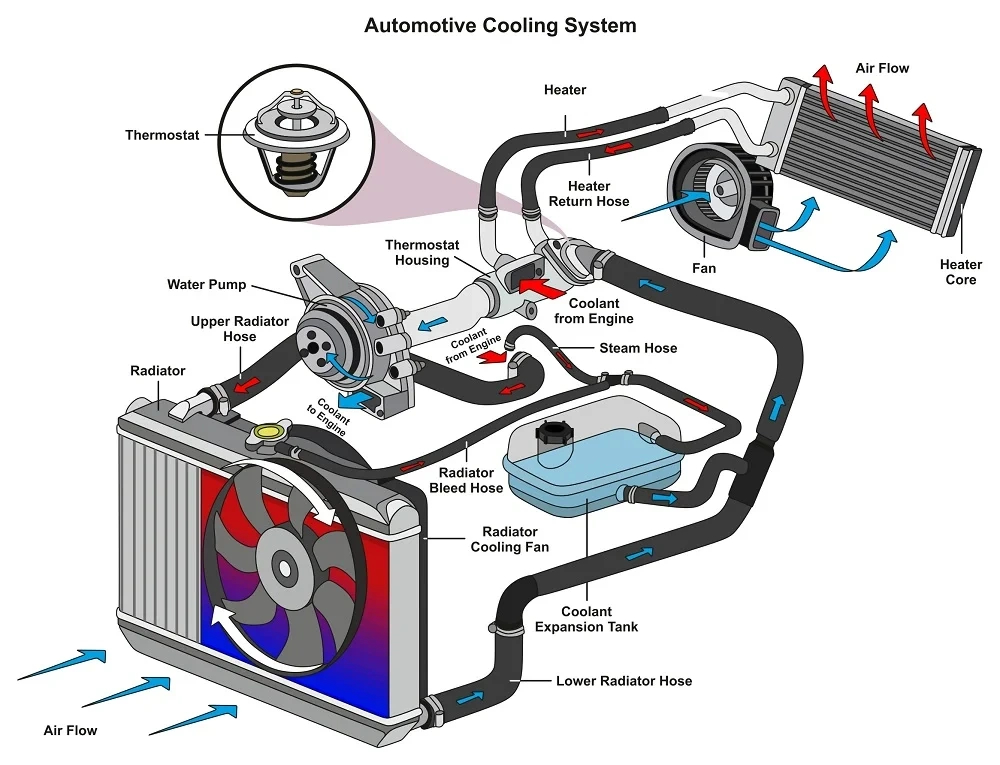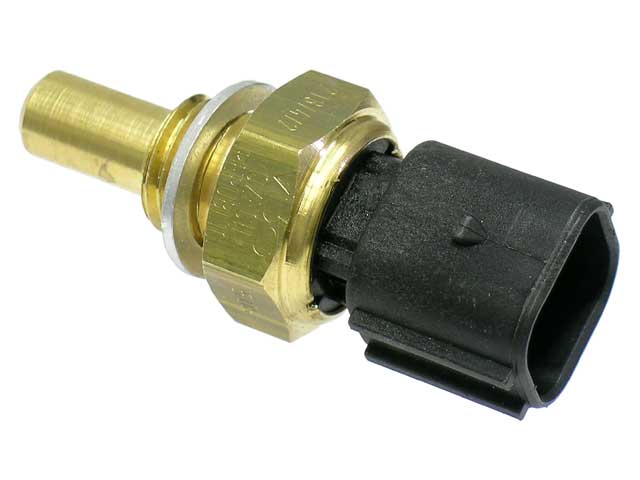P0128 - Engine Coolant Temperature Below Thermostat Regulating Temperature
When you see the check engine light (CEL) turn on, it normally means you might have to spend money on repairs.

The hard part about the CEL is not knowing exactly what’s wrong with your car. That’s why having a tool called an OBD II scanner is really helpful. It can tell you more about what’s wrong.
What is an On Board Diagnostic (OBD) Scanner?
OBD-II, or On-Board Diagnostics II, (also EOBD or just OBD) is a standardized system that cars and trucks use for self-diagnosing and reporting. This system has been mandatory on all cars sold in the United States since 1996. OBD-II monitors various vehicle systems and components, such as the engine and transmission, and can detect malfunctions. When a problem is identified, OBD-II can log a diagnostic trouble code (DTC) and, in many cases, alert the driver through the check engine light (CEL) on the dashboard. It allows mechanics and vehicle owners to quickly understand the nature of the problem by connecting an OBD-II scanner to the vehicle’s OBD-II port, usually found under the dashboard. This makes diagnosing and fixing issues much more straightforward.
What is error code P0128?
The P0128 code is a universal diagnostic trouble code that indicates “Engine Coolant Temperature Below Thermostat Regulating Temperature.” This means the engine’s coolant isn’t getting warm enough to reach the optimal operating temperature, leading to the engine running cooler than it should. While this might seem less severe than overheating, running too cool can actually cause the engine to wear out more quickly. Here’s the reason why.
At the start, with a cold engine, the coolant doesn’t circulate through the cooling system right away. It remains in the engine block until it warms up to a certain temperature. During this phase, the vehicle increases fuel delivery to the engine to help it heat up faster.
Once the engine reaches the right operating temperature, the Engine Control Unit (ECU) adjusts the air to fuel ratio based on data from the oxygen sensors, optimizing fuel efficiency. However, if the coolant fails to warm up to the required temperature, the check engine light will activate on the dashboard, and a OBD scanner will read the P0128 code.
What's the difference between P1028 and P0126?
Some diagnostic trouble codes (DTCs) are quite similar, making it difficult to distinguish between them. This is particularly true for the P0128 and P0126 codes. Despite their similar appearance, these codes represent different problems.
The P0126 code means “Insufficient Coolant Temperature for Stable Operation,” indicating that the coolant hasn’t warmed up to the required temperature in the expected time.
While both codes may suggest a malfunctioning thermostat, the P0128 code could also indicate a problem with the temperature sensors.
The P0126 code often comes with additional signs, such as higher fuel usage, the car going into “limp mode,” issues with the heater, and unusual readings on the temperature gauge.
What causes error P0128?

The P0128 code is quite common and can be caused by several issues. If you’re encountering a P0128 code, here are some key components to check:
A stuck-open thermostat is the most frequent culprit behind the P0128 code, as it can prevent the coolant from reaching the desired operating temperature.

However, it’s also important to verify the coolant level, as low coolant can trigger the P0128 code. Additionally, ensure you’re using the correct type of coolant for your vehicle, as the wrong coolant can lead to various cooling system problems.
Although it’s less likely to happen, faulty air intake temperature sensors, coolant temperature sensors, and faulty radiator fans can cause the P0128 code to come up. The thermostat and coolant level should be the first thing to take a look at, but these other components should also be on your inspection checklist.

Fault Code P0128 Symptoms
The first sign of the P0128 code is the check engine light turning on. Reading the codes immediately can prevent a lot of issues and protect your engine from unnecessary damage.
Another symptom is your vehicle taking longer to reach its operating temperature, or failing to do so entirely. You might observe the temperature gauge gradually increasing, but then dropping below the ideal level once you’re on the highway.
This issue can lead to decreased fuel efficiency. Cars typically use more fuel in cold conditions to help the engine warm up quicker, but if you’re seeing an unexpected increase in fuel consumption, it could be related to this problem.
Lastly, a malfunctioning heater is a clear symptom. The heater uses heat from the engine to warm the car’s interior. If the engine isn’t reaching the proper temperature, your car’s heater may not work effectively, leaving the inside cold during winter months.
Diagnosing a po128 Code Problem
The initial and simplest action is to hook up an OBD II scanner to the car’s ECU to pull the fault codes directly.
While this reveals what code triggered the check engine light (CEL), it doesn’t pinpoint the exact cause. To thoroughly investigate this code and identify the malfunctioning component, a more hands-on approach is necessary.
Firstly, inspect the coolant level. Upon opening the hood, the coolant tank is usually easy to spot and check. If the coolant is below the minimum mark, it should be filled to the recommended level. Completing this step allows you to move on to further diagnostics.
Next, examine the electrical connections for the temperature sensors. Due to the natural vibrations of a running car, these connections can loosen over time, particularly in older vehicles.
If the connections seem secure, the following step is to assess the radiator hose’s heating speed. A properly functioning thermostat will cause the hose to become quite hot quickly – within about 10 minutes of starting the vehicle. A slow-to-warm hose suggests a thermostat stuck in the open position, likely explaining the P0128 code.
How to Fix Error Code P0128
Begin by allowing your car to cool down before attempting any repairs. Even though the engine may not reach its operating temperature while driving, it can still get hot when idling. Check the coolant level by opening the reservoir cap; if it’s below the required minimum, add coolant until it reaches the full mark. Afterwards, take your car for a short spin to see if the P0128 code reappears.
Should refilling the coolant not resolve the issue, consider replacing the thermostat next. This part is not only cost-effective but also generally easy to swap out in most vehicles. However, it’s crucial to understand how to refill your car’s coolant system properly to avoid introducing air pockets, which can lead to engine overheating and potentially severe damage. If you’re uncertain about refilling the coolant correctly, it’s wise to have a mechanic handle the thermostat and coolant replacement.
If a new thermostat doesn’t clear the P0128 code, the coolant temperature sensor might need replacing. This involves draining some coolant to access and disconnect the sensor before removing it from its housing. Install the new sensor, reconnect it, and refill the coolant to the appropriate level.
Finally, clear the P0128 code from the ECU with an OBD II scanner and test drive your vehicle. Replacing these components should effectively resolve the issue with the P0128 code on your car.
Can you drive your car with a P0128 Code?
The P0128 fault code is quite common and falls lower on the severity scale, but it shouldn’t be ignored. The main concern is the engine operating at cooler temperatures than ideal and consuming more fuel. While this won’t cause immediate engine damage, neglecting it over time certainly can.
Since your car uses a single check engine light for alerts from all sensors, it’s crucial to take each fault code seriously and address it promptly. Ignoring the P0128 code might mask other issues within your vehicle that could go unnoticed.
Delaying action on the P0128 code requires caution. Problems with the cooling system can escalate quickly, leading to more significant issues if not addressed timely.
